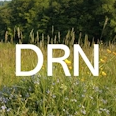Northern Pool Frog in the UK: Habitat, Food & Rewilding Potential
🐸 The Northern Pool Frog: Restoring the UK’s Rarest Amphibian
When we think of rare amphibians in the UK, the Great Crested Newt usually comes to mind — it’s strictly protected, a flagship species for ponds, and a regular feature in conservation headlines. But did you know there is an even rarer amphibian, once native to Britain, that was declared extinct and is now being brought back through careful reintroduction?
Meet the Northern Pool Frog (Pelophylax lessonae) — the UK’s rarest amphibian, and one of the most fascinating species in European wetland ecosystems.
What is the Northern Pool Frog?
The Northern Pool Frog is a small, striking amphibian, typically 5–7 cm long, with:
- A bright green or olive-brown body, often patterned with darker blotches.
- A pale yellow-green stripe running down the back.
- Long hind legs, making it an excellent jumper and swimmer.
- A distinctive mating call, a rhythmic “chuck-chuck-chuck” often delivered in chorus on warm evenings.
Unlike many UK frogs, the Pool Frog is more closely related to continental European green frogs (Pelophylax group), which explains some of its unique ecological needs.
Extinction in the UK
Historically, Pool Frogs lived in East Anglia, particularly in Norfolk and Suffolk fens.
Their decline was driven by:
- Habitat loss: drainage of wetlands and fens for agriculture.
- Pollution: chemical run-off degrading their breeding ponds.
- Isolation: small fragmented populations became unsustainable.
- By the 1990s, the Northern Pool Frog was officially declared extinct in Britain.
Reintroduction Efforts
In 2005, conservationists launched a pioneering project to bring the Pool Frog back. Using frogs from Sweden (genetically closest to the lost British population), they reintroduced them to specially managed ponds in Norfolk.
Since then, reintroduced populations have been breeding successfully. Today, the Northern Pool Frog is still critically rare in the UK — but it is here once again, thanks to careful habitat restoration.
Habitat Requirements
The Northern Pool Frog is far more specialised than the common frog (Rana temporaria). Its survival depends on warm, sunlit, unshaded ponds with gently sloping edges and rich plant life.
Preferred Conditions
- Shallow, south-facing ponds that warm up quickly.
- Minimal tree cover (too much shade cools the water).
- High plant diversity with open water zones.
- Connected to surrounding wetlands, meadows, and rough grassland.
Key Plant Species
- Water mint (Mentha aquatica) and Brooklime (Veronica beccabunga): provide cover and insect prey.
- Amphibious bistort (Persicaria amphibia) and Water forget-me-not (Myosotis scorpioides): ideal for egg-laying zones.
- Emergent rushes and sedges (e.g. Carex and Juncus species): create shelter and basking platforms.
Food Sources
- Adult frogs: feed on flying insects like midges, moths, and beetles.
- Tadpoles: graze on algae, detritus, and microscopic plants in shallow warm water.
Why They Matter
- Biodiversity indicators: Pool Frogs are highly sensitive to water quality and habitat structure, so their presence signals a healthy pond ecosystem.
- Trophic role: As insectivores, they help regulate insect populations. In turn, they are prey for herons, grass snakes, dragonfly larvae, and bats — linking aquatic and terrestrial food webs.
- Rewilding potential: Pool Frogs benefit from beaver-created wetlands, where ponds, shallow edges, and sunny clearings provide exactly the kind of habitat they need.
Northern Pool Frogs and Rewilding in Devon & Cornwall
Although Pool Frogs are not yet present in Devon or Cornwall, projects like Moor Barton Wilding are exploring how restored wetlands and beaver landscapes can pave the way for future reintroductions. By creating sunlit ponds, rough grassland, and connected wetland corridors, landowners in the South West can help lay the foundations for amphibian recovery.
For anyone building a wildlife pond in Devon or Cornwall, designing with Pool Frog requirements in mind — shallow edges, native aquatic plants, open sunny spots — will also benefit newts, common frogs, dragonflies, and countless other wetland species.
🌱 The Norfolk Project & ZSL: Bringing Back the Pool Frog
One of the most inspiring conservation efforts in the UK is the reintroduction of the Northern Pool Frog (Pelophylax lessonae) in Norfolk, led by a partnership of organisations including ZSL (Zoological Society of London), ARC (Amphibian & Reptile Conservation), Natural England, and Norfolk Wildlife Trust.
What’s been done
- ZSL, through its Disease Risk Analysis & Health Surveillance (DRAHS) programme, helped lead the project’s planning phases. They ran detailed disease risk analyses before any frogs were moved, contributed veterinary and biosecurity expertise, carried out health surveillance post-release, and continue to monitor the populations at release sites. ZSL
- ARC and Natural England handled habitat restoration, obtaining permits, arranging the releases, running head-starting (raising tadpoles or young frogs in controlled conditions to improve survival before release) and follow-up monitoring.
- The reintroduction began in 2005-2008, with frogs sourced from Sweden, chosen after genetic work revealed that English pool frogs are closely related to Scandinavian Pelophylax lessonae.
- A second population was later established at Thompson Common (released around 2015) using stock from the first reintroduced population, to spread risk and improve species resilience.
Why it matters
- It reverses British extinction of a native amphibian. Historically, the Pool Frog was lost from Norfolk due to drained wetlands, habitat destruction and disturbance. ZSL+1
- ZSL’s involvement ensures that health risks (disease, biosecurity) are properly managed, which is vital — amphibian reintroductions are very vulnerable to disease, so this is best practice. ZSL
- The creation of multiple release sites (Thompson Common and earlier sites) helps ensure genetic diversity and population resilience. Having separate but connected populations reduces risk of total failure.
Recent and Ongoing Work
- In recent years, habitat restoration has gone beyond just ponds: the project is restoring “ghost pingos” (ancient ice-age pond depressions) and enhancing agricultural land surrounding existing frog sites to provide more habitat, corridors, and buffer zones.
- Norfolk Wildlife Trust, in partnership with Woodland Trust and ARC, have been acquiring land (e.g. Mere Farm) and restoring ponds to allow the frogs to expand from their stronghold at Thompson Common into neighbouring landscape. norfolkwildlifetrust.org.uk
Challenges and the Road Ahead
- Genetic diversity: With such a small founding population, long-term success depends on careful management.
- Climate change: Warmer summers may favour Pool Frogs, but drought risks could threaten shallow breeding ponds.
- Public awareness: Unlike the Great Crested Newt, few people know about the Pool Frog — raising its profile is essential.
Despite these challenges, the Pool Frog’s story is a symbol of hope: even species once declared extinct can return, given the right conditions and commitment.
Conclusion
The Northern Pool Frog is more than just a rare amphibian — it’s a living emblem of habitat restoration, species recovery, and rewilding potential in the UK.
By restoring healthy, plant-rich ponds, supporting rewilding projects like Moor Barton, and recognising the role of keystone species such as beavers, we can ensure that this remarkable frog has a future in Britain once again.
👉 Whether you’re a landowner, conservationist, or nature enthusiast, you can help by creating ponds, protecting wetlands, and supporting rewilding projects in Devon and Cornwall.
🌿 Did You Know? Northern Pool Frog Facts
- 🐸 Rarer than the Great Crested Newt — while many people know the Great Crested Newt, far fewer have heard of the Northern Pool Frog, Britain’s rarest amphibian.
- 🎶 They sing at night — male Pool Frogs have a distinctive call, a rhythmic “chuck-chuck-chuck,” often performed in chorus on warm evenings.
- 🌞 Sun lovers — unlike common frogs, Pool Frogs prefer warm, shallow, unshaded ponds with plenty of sunshine.
- 🪲 Insect hunters — adults feed on beetles, flies, and moths, while tadpoles graze on algae and microscopic plants.
- 🦫 Friends of beavers — the sunny wetlands and shallow ponds created by beaver activity provide perfect habitat conditions for Pool Frogs.
- 🇸🇪 Scandinavian roots — the Pool Frogs reintroduced to Britain came from Sweden, where they share the same genetic lineage as our lost native population.






